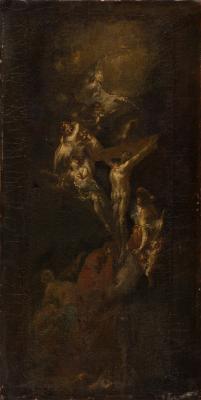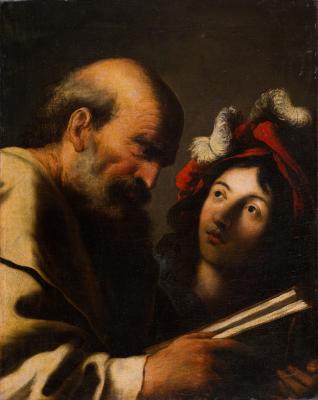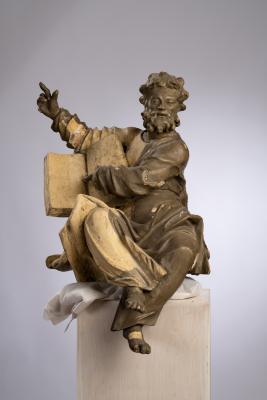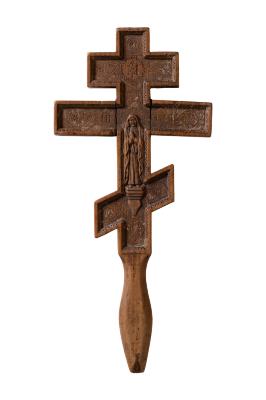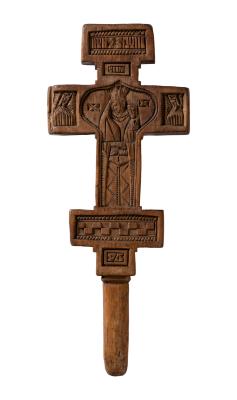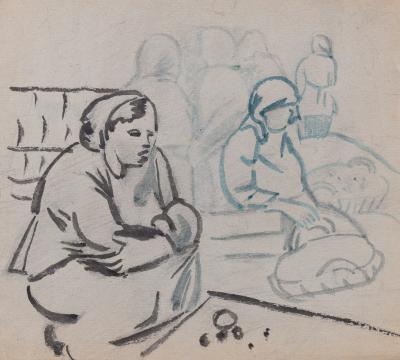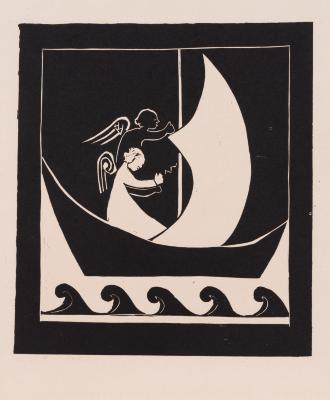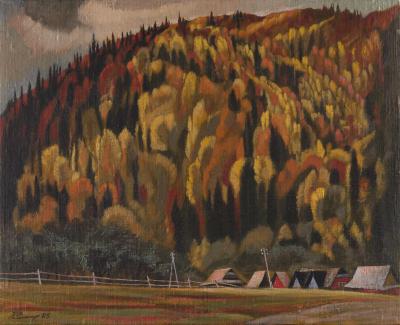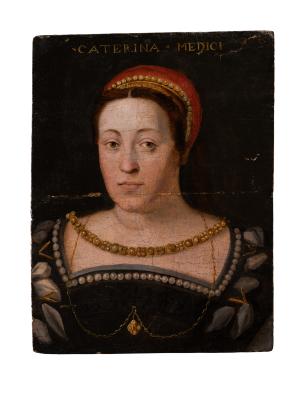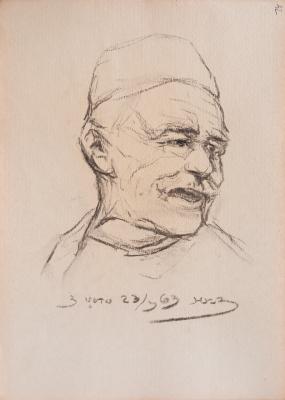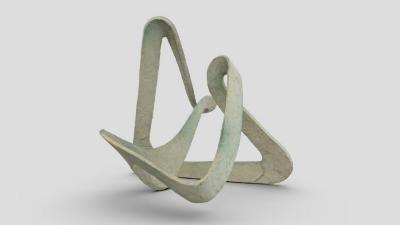The composition is known only in one version of 1816, which was issued in the album Raccolta di Cinquanta Costumi li più interessanti delle città, terre e paesi in provincie diverse del Regno di Napoli (Collection of Fifty Most Interesting Picturesque Costumes from Cities, Towns and Villages of Different Provinces of the Kingdom of Naples) published by Giovanni Scudellari in Rome in 1817. A woman with a basket over her shoulder and a stick in her hand is taking a pass in the Apennines. She is walking to the top of the mountain, visible on the horizon. She is wearing traditional mountain people clothing – a long red skirt, a blue jacket, an apron tied around the waist, and a headscarf with long ribbons tied on her head. A white dog accompanies the woman. In the title, the author indicates the area of Latina. It is probably the village of Lotino, which is hidden deep in the mountains on the border of the province of Terra di Lavoro. Such a province does not exist nowadays, as it was divided between Lazio and Campania after establishing the Kingdom of Italy (1861). The people's clothing is painted with bright colours, while the bushes and the background – with dimmed ones.





